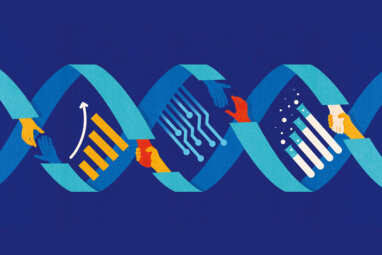1. B. Halweil, “Home Grown: The Case for Local Food in a Global Market,” November 2002, www.worldwatch.org/pubs/paper/163.
2. See www.unilever.com/ourvalues/environmentandsociety/sustainability/fish/default.asp; www.msc.org; and B. May, D. Leadbitter, M. Sutton and M. Weber, “The Marine Stewardship Council (MSC),” in “Eco-labelling in Fisheries: What Is It All About?” ed. B. Phillips, T. Ward and C. Chaffee (Oxford: Blackwell Science, 2003), 14–33.
3. P.E. Steinberg, “Fish or Foul: Investigating the Politics of the Marine Stewardship Council” (paper presented at the Conference for Marine Environmental Politics in the 21st Century, Berkeley, California, April 30-May 2, 1999), globetrotter.berkeley.edu/macarthur/marine/papers/steinberg-1.html.
4. S. Waddell, “Societal Learning and Change: How Governments, Business and Civil Society Are Creating Solutions to Complex Multi-Stakeholder Problems” (Sheffield, UK: Greenleaf Publishing, 2005).
5. See www.solsustainability.org; S. Schley and J. Laur, “The Sustainability Challenge: Ecological and Economic Development,” The Systems Thinker 7, no. 7 (September 1996): 1–7; and C.O. Scharmer and P. Senge, “Community Action Research,” in “Handbook of Action Research: Participative Inquiry and Practice,” ed. P. Reason and H. Bradbury (London: Sage Publications, 2001), 238–249.
6. P.M. Senge, “The Fifth Discipline: The Art and Practice of the Learning Organization” (New York: Currency Doubleday, 1990/2006); P.M. Senge, A. Kleiner, C. Robers, R. Ross and B. Smith, “The Fifth Discipline Field-book: Strategies and Tools For Building a Learning Organization” (New York: Currency Doubleday, 1994); G. Roth and P.M. Senge, “From Theory to Practice: Research Territory, Processes and Structure At an Organizational Learning Centre,” Journal of Organizational Change Management 7, no. 5 (February 1996): 92–106; and www.solonline.org.
7. P.M. Senge and G. Carstedt, “Innovating Our Way to the Next Industrial Revolution,” MIT Sloan Management Review 42, no. 2 (winter 2001): 24–38; and J. Ehrenfeld, “Learning and Change in the SoL Consortium” (presentation at the Harley-Davidson Consortium meeting, Milwaukee, Wisconsin, April 9–11, 2003), www.solsustainability.org/toolkit.htm.
8. For a more comprehensive list and short analysis of 21 different frameworks, see J. Elkington, “Triple Bottom Line Reporting,” 2003, www.ccc.govt.nz/TripleBottomLine.
9. See http://www.naturalstep.org.
10. P. Hawken, A. Lovins and L. Hunter Lovins, “Natural Capitalism: Creating the Next Industrial Revolution” (Boston: Little, Brown, 1999).
11. See http://www.iso14000.com.
12. See http://www.zeri.org.
13. J.M. Benyus, “Biomimicry: Innovation Inspired By Nature” (New York: Morrow, 1997); and www.biomimicry.net.
14. H.A. Verfaillie and R. Bidwell, “Measuring Eco-Efficiency: A Guide to Reporting Company Performance” (Geneva: World Business Council for Sustainable Development, 2000).
15. A. Sturm, M. Wackernagel and K. Müller, “The Winners and Losers in Global Competition: Why Eco-Efficiency Reinforces Competitiveness: A Study of 44 Nations” (Zürich: Verlag Rüegger, 2000); and www.ecological footprint.com.
16. See United Nations Environment Program/Society of Environmental Toxicology and Chemistry cooperation on best available practice in life-cycle assessment, www.setac.org/lca.html.
17. W. McDonough and M. Braungart, “Cradle to Cradle: Remaking the Way We Make Things” (New York: North Point Press, 2002).
18. B.J. Bulkin, J. Ehrenfeld, C. Gray, P. Morris, R. Saillant, T. Savino, T. Reese and P.M. Senge, “Integrating Frameworks For Sustainability,” working paper, SoL Sustainability Consortium, Cambridge, Massachusetts, May, 2000 (revised, January 2002), www.solonline.org.
19. These three terms were influenced by the writings of John Ehrenfeld. For example, see J. Ehrenfeld, “Searching for Sustainability: No Quick Fix,” Reflections 5, no. 8 (2004): 1–12.
20. World Commission on Sustainable Development; see www.un.org/esa/sustdev/csd/csd.htm.
21. J. Benyus, “Biomimicry” (New York: Morrow, 1997).
22. See www.un.org/Overview/rights.html.
23. A similar project is now underway among consortium members, seeking to clarify the social dimensions of sustainability. See SoL Societal Dimensions Workgroup, “Social Dimensions of Sustainability Frameworks Document” (presentation at SoL Sustainability Consortium, Brewster, Massachusetts, April 26–28, 2005), www.solsustainability.org.
24. The Working Group on Sustainability Frameworks, SoL Sustainability Consortium,Integrating Frameworks for Sustainability (Cambridge, Massachusetts, April 2001), www.solsustainability.org/toolkit.htm.
25. Anthony Reese, director of engineering planning, Harley-Davidson Motor Company, 2004.
26. This phrase is a favorite of Karl-Hènrik Robèrt, the Swedish oncologist and pioneer of The Natural Step framework.
27. G.P. Richardson, “Feedback Thought in Social Science and Systems Theory” (Philadelphia: University of Pennsylvania Press, 1991); and Senge et al., “Fifth Discipline Fieldbook,” 1994.
28. Y.L. Doz and G. Hamel, “Alliance Advantage: The Art of Creating Value Through Partnering” (Boston: Harvard Business School Press, 1998); and L.C. Abrams, R. Cross, E. Lesser and D. Z. Levin, “Nurturing Interpersonal Trust in Knowledge-Sharing Networks,” Academy of Management Executive, 17, no. 4 (2003): 64–77.
29. J. Browne and D. Isaacs, “The World Café: Shaping Our Future Through Conversations That Matter” (San Francisco: Berrett-Koehler, 2005), 5.
30. Ibid.
31. Oxfam International, “Mugged: Poverty in your Coffee Cup” (Oxford, United Kingdom: Oxfam 2002).
32. Food and Agriculture Organization of the United Nations, “The State of Agricultural Commodity Markets,” 2004, www.fao.org/docrep/007/y5419e/y5419e00.htm.
33. Business participants included Unilever, General Mills, Rabobank, SYSCO (the world’s largest food distributor), Nutreco (the world’s largest fish farming company) and Sadia (one of Brazil’s few multinational food companies), along with smaller food companies and farm cooperatives. Senior government officials from Europe and South America were involved, along with global NGOs like Oxfam, World Wildlife Fund, Consumers International and The Nature Conservancy and local NGOs from Suriname, Brazil, the United States, the Netherlands, Italy and Germany.
34. Scharmer describes the method-of-learning journey in C.O. Scharmer, “Theory U: Learning From the Future As It Emerges” (Cambridge, Massachusetts: SoL, in press).
35. Sustainability Institute Report, “Commodity Systems Challenges: Moving Sustainability into the Mainstream of Natural Resource Economics,” (Hartland, Vermont: Sustainability Institute 2003); and www.sustainer.org/tools_resources/pers.html.
36. Brown and Isaacs, “World Café”; and Senge, “Fifth Discipline,” 357–360.
37. As a comparison, see R. Bouwen and T. Taillieu, “Multi-Party Collaboration As Social Learning For Interdependence: Developing Relational Knowing For Sustainable Natural Resource Management,” Journal of Community and Applied Social Psychology 14 (2004): 137–153.




